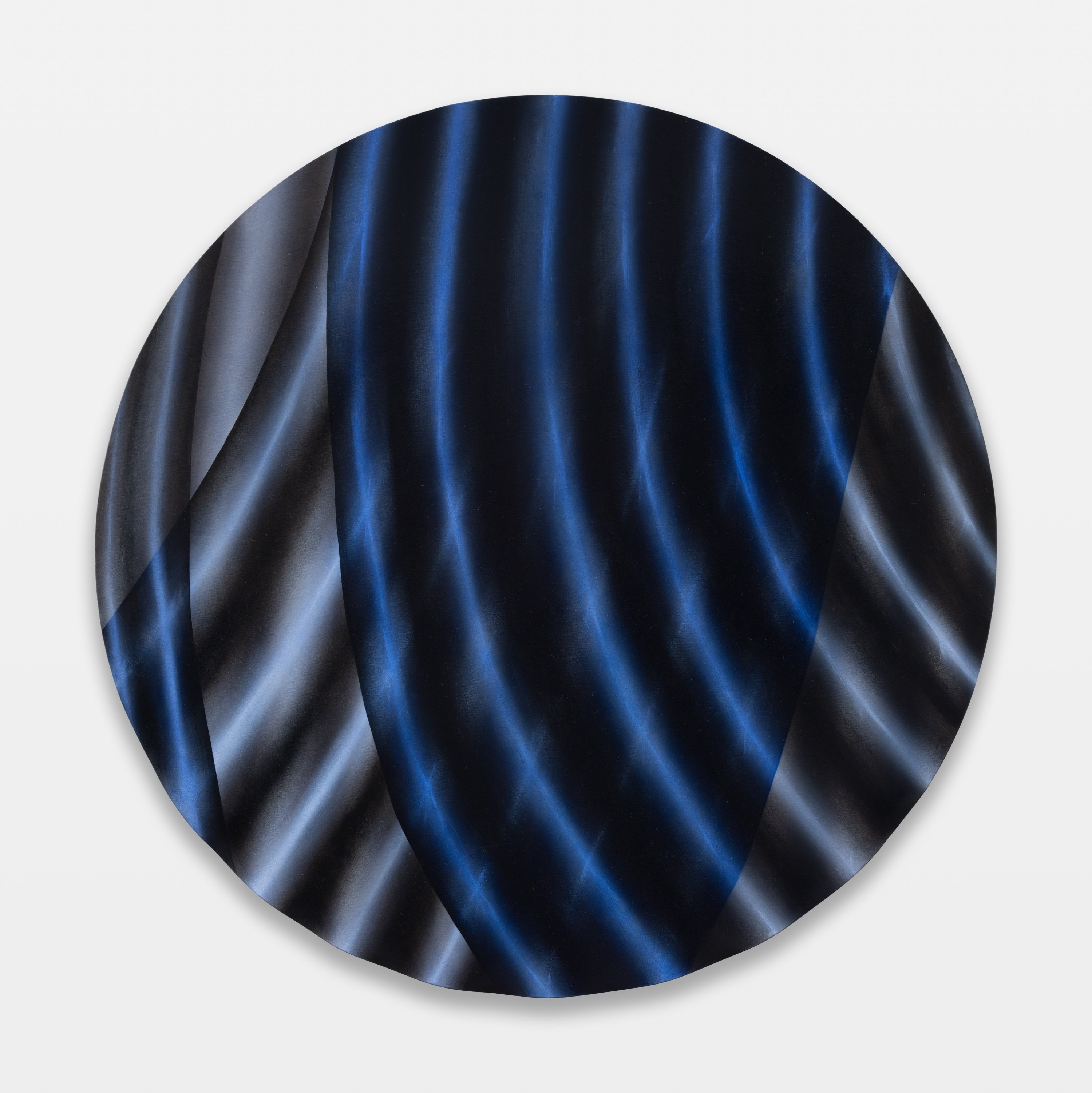Emilia Kina
untitled
FSP ING 0279
Emilia Kina's images resemble curtains, screens and blinds; their mystery invites the use of imagination, prompting reflection on what is hidden and what is visible. Her works are distinguished by a sense of spaciousness that the artist achieves by modifying the canvas—sanding it down or reinforcing it with plywood. On such prepared forms she stretch cotton on which she paints. Thanks to these techniques, the draperies appear to ripple and flutter.
Their sources are in lie in the theory of painting and the Renaissance concept of the image as a window onto the world, as articulated by Leon Battista Alberti. The motif of the curtain first appeared in her diploma work, which was a series inspired by photographs of now non-existent Silesian palaces. She adhered postcard prints to canvas and obscured the shapes of buildings with geometric planes of white paint. Confronted with these forms, each viewer could imagine the missing shapes.
Among the aspects inspiring her painting is the optical device called the camera obscura, which is a precursor to the photographic camera. This device was used by painters wishing to depict reality on their canvases with the utmost precision. This mechanism stimulated the imagination and led Kina to contemplate the processes involved in the creation of images and the possibility of displaying them on various surfaces. Another point of reference was the history of Gustave Courbet's work "The Origin of the World" from 1866. This controversial piece was covered with a green velvet cloth—partly to protect the painting from external factors and partly to conceal it from undesired viewers due to its erotic subject matter.
Kina consistently follows familiar motifs, yet in recent years we have observed her experiments with vibrant colors and light. In her untitled painting from 2024, the folds of the fabric transform into an almost abstract composition. Like many of her other works, it evokes associations with theater and the performances played out on its stage, where the painting itself can be both a set design and a mysterious actor.
Emilia Kina
b. 1990, Kraków
A graduate of the Academy of Fine Arts in Krakow.Her graduation work was completed in Prof. Adam Bricken’s studio and the graduation work annex in photography in Tomáš Agat Błoński’s studio. Kina’s artistic practice primarily revolves around painting and photography. She also creates exhibition arrangements, collaborating with institutions such as the Stefan Gierowski Foundation, the Museum of Literature in Warsaw, and the Manggha Museum in Krakow. Kina often return to the motif of screens, curtains and blinds. She modifies her canvases, giving the painted materials the illusion of rippling and fluttering. During the pandemic, she created her first works from the series "spotlights," where light played a significant role in the composition. The artist is interested in the materiality of the painting. Her works often stem from theoretical reflection, particularly from Renaissance treatises on painting, including the concept of the painting as a window and theories of photography. She lives and works in Krakow.
b. 1990, Kraków
A graduate of the Academy of Fine Arts in Krakow.Her graduation work was completed in Prof. Adam Bricken’s studio and the graduation work annex in photography in Tomáš Agat Błoński’s studio. Kina’s artistic practice primarily revolves around painting and photography. She also creates exhibition arrangements, collaborating with institutions such as the Stefan Gierowski Foundation, the Museum of Literature in Warsaw, and the Manggha Museum in Krakow. Kina often return to the motif of screens, curtains and blinds. She modifies her canvases, giving the painted materials the illusion of rippling and fluttering. During the pandemic, she created her first works from the series "spotlights," where light played a significant role in the composition. The artist is interested in the materiality of the painting. Her works often stem from theoretical reflection, particularly from Renaissance treatises on painting, including the concept of the painting as a window and theories of photography. She lives and works in Krakow.
